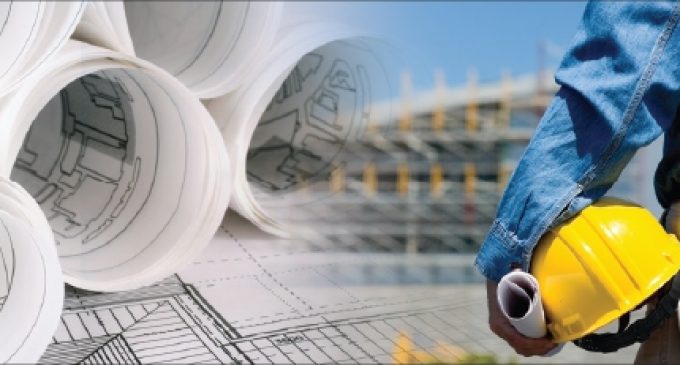First Decline in Construction Activity Since August 2013

The Ulster Bank Construction Purchasing Managers’ Index® (PMI®) – a seasonally adjusted index designed to track changes in total construction activity – fell to 48.3 in September from 53.7 in August and marked the first decrease in Irish construction activity since August 2013. The rate of contraction was modest and compared unfavourably with the long-run series average of 50.9.
Commenting on the survey, Simon Barry, Chief Economist Republic of Ireland at Ulster Bank, noted that: “The latest results of the Ulster Bank Construction PMI survey showed a marked loss of momentum in September. The headline PMI fell from 53.7 in August to 48.3 in September, with a reading below the 50 no-change benchmark signalling that construction activity decreased last month for the first time since August 2013. This decline reflected weaker activity patterns across Commercial and Housing. Commercial activity fell in September, in the process halting a six-year run of uninterrupted growth. More encouragingly, housing activity continues to grow, with its PMI reading of 52.9 still comfortably above the expansion threshold of 50. Housing remained the strongest sub-sector for a 9th month in a row, though the pace of residential activity growth did ease to a 4½ year low in September.
“New Orders moderated further last month, with the September reading marking the slowest pace of new business growth in over six years as many respondents reported that Brexit uncertainty is negatively weighing on customer demand. In turn, the ongoing cooling in order flows continues to underpin slower – but still marginally positive – growth in demand for construction workers. Confidence about the coming year improved slightly last month, but the Future Activity Index remains near August’s 9-year low as anecdotes from the survey highlighted that concerns about Brexit impacts were the key factor weighing on sentiment regarding the sector’s prospects for the incoming year. Recent manufacturing and services PMI survey results have been signalling a deterioration in activity trends in some key areas of the Irish economy in recent months, largely reflecting the combination of weaker global growth (especially in the factory sector) and growing risk of a no-deal Brexit. The September results of the Construction equivalent are suggesting that softer trends in the internationally-traded sectors of the economy are showing signs of spilling over into construction activity.”
House building is sole bright spot
Residential construction was the only monitored category to observe an increase in activity during September. Civil engineering firms posted their thirteenth consecutive monthly fall in activity. Meanwhile, commercial building decreased for the first time since July 2013, and at a solid pace.
New business rises at softer pace in September
The rate of new order growth eased for the third month running and was the slowest in the current sequence of growth which began in July 2013. Construction firms highlighted the negative impact of ongoing Brexit uncertainty on overall demand conditions.
Employment growth slowest in almost six years
In line with the softer rise in new business, employment growth in the Irish construction industry eased to an almost six-year low during September. Irish construction firms expressed reluctance to take on additional staff as a result of lower activity levels.
September marked the first time since February 2014 that purchasing activity among Irish construction firms decreased. That said, the rate of contraction was only modest, as some firms commented that they had brought forward their input purchases to guard against any Brexit-related supply issues.
On the price front, the rate of input price inflation was little changed from August’s 64-month low. Nonetheless, cost burdens rose at a sharp pace amid reports of greater prices paid for copper, steel and insulation. Input costs in the Irish construction sector have increased on a monthly basis for over six years.
Looking forward, optimism among Irish construction companies picked up slightly from August’s near nine-year low during September, with around one-quarter of panellists expecting activity to increase over the coming year. That said, the overall degree of optimism was historically subdued, with Brexit uncertainty cited as the principal negative factor weighing on year-ahead outlooks. On the other hand, positive sentiment was linked to forecasts of an improvement in economic conditions over the next 12 months.


























